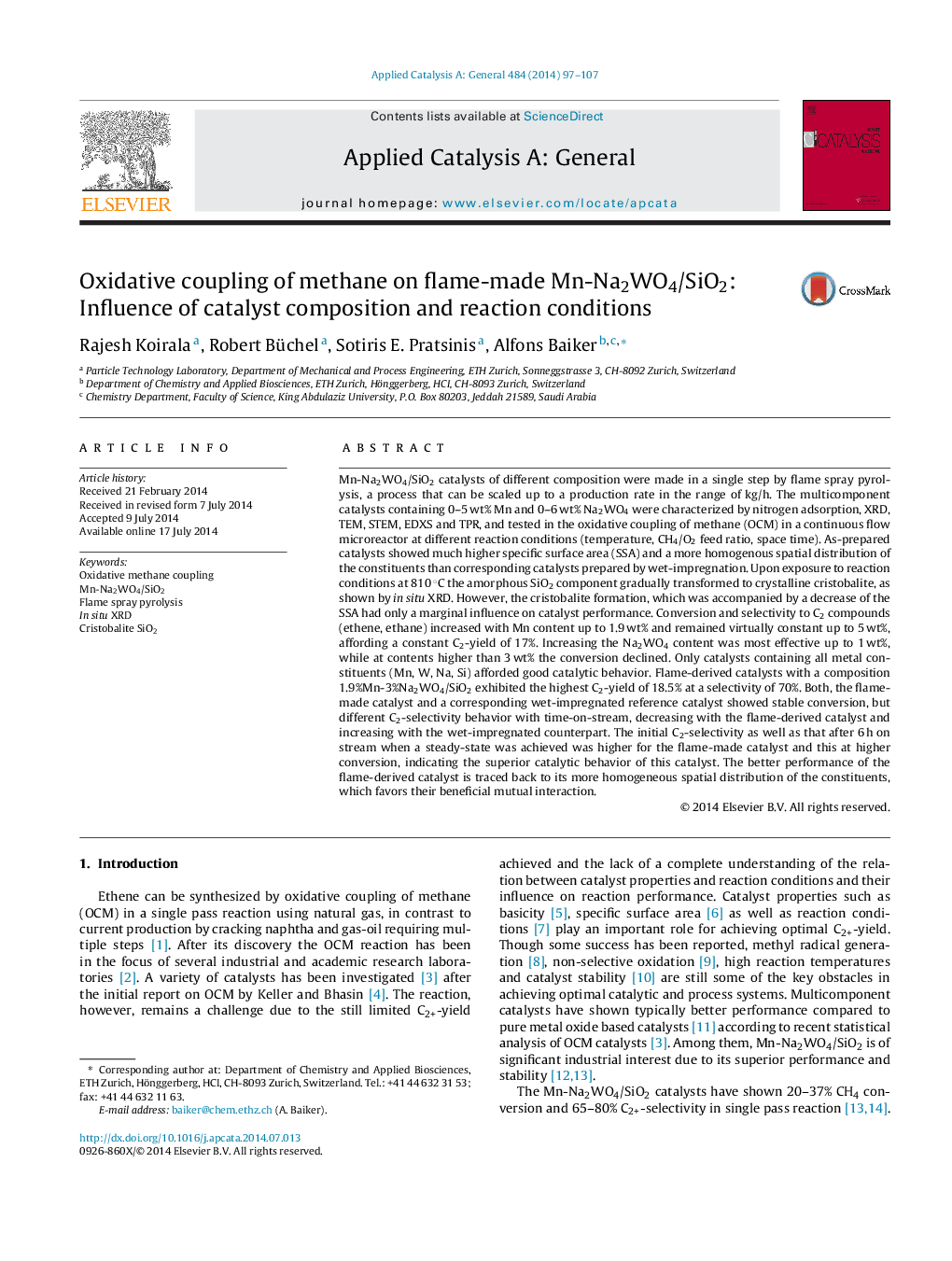| Article ID | Journal | Published Year | Pages | File Type |
|---|---|---|---|---|
| 39656 | Applied Catalysis A: General | 2014 | 11 Pages |
•Mn-Na2WO4/SiO2 catalysts of various composition were prepared using flame spray pyrolysis.•Catalysts containing all metals showed best performance in the oxidative coupling of CH4.•Transformation of amorphous SiO2 to cristobalite occurred under reaction conditions.•This transformation lowered the SSA but had only a marginal effect on catalyst performance.•1.9%Mn-3%Na2WO4/SiO2 showed optimal performance with 19% yield of C2.
Mn-Na2WO4/SiO2 catalysts of different composition were made in a single step by flame spray pyrolysis, a process that can be scaled up to a production rate in the range of kg/h. The multicomponent catalysts containing 0–5 wt% Mn and 0–6 wt% Na2WO4 were characterized by nitrogen adsorption, XRD, TEM, STEM, EDXS and TPR, and tested in the oxidative coupling of methane (OCM) in a continuous flow microreactor at different reaction conditions (temperature, CH4/O2 feed ratio, space time). As-prepared catalysts showed much higher specific surface area (SSA) and a more homogenous spatial distribution of the constituents than corresponding catalysts prepared by wet-impregnation. Upon exposure to reaction conditions at 810 °C the amorphous SiO2 component gradually transformed to crystalline cristobalite, as shown by in situ XRD. However, the cristobalite formation, which was accompanied by a decrease of the SSA had only a marginal influence on catalyst performance. Conversion and selectivity to C2 compounds (ethene, ethane) increased with Mn content up to 1.9 wt% and remained virtually constant up to 5 wt%, affording a constant C2-yield of 17%. Increasing the Na2WO4 content was most effective up to 1 wt%, while at contents higher than 3 wt% the conversion declined. Only catalysts containing all metal constituents (Mn, W, Na, Si) afforded good catalytic behavior. Flame-derived catalysts with a composition 1.9%Mn-3%Na2WO4/SiO2 exhibited the highest C2-yield of 18.5% at a selectivity of 70%. Both, the flame-made catalyst and a corresponding wet-impregnated reference catalyst showed stable conversion, but different C2-selectivity behavior with time-on-stream, decreasing with the flame-derived catalyst and increasing with the wet-impregnated counterpart. The initial C2-selectivity as well as that after 6 h on stream when a steady-state was achieved was higher for the flame-made catalyst and this at higher conversion, indicating the superior catalytic behavior of this catalyst. The better performance of the flame-derived catalyst is traced back to its more homogeneous spatial distribution of the constituents, which favors their beneficial mutual interaction.
Graphical abstractFigure optionsDownload full-size imageDownload high-quality image (260 K)Download as PowerPoint slide
